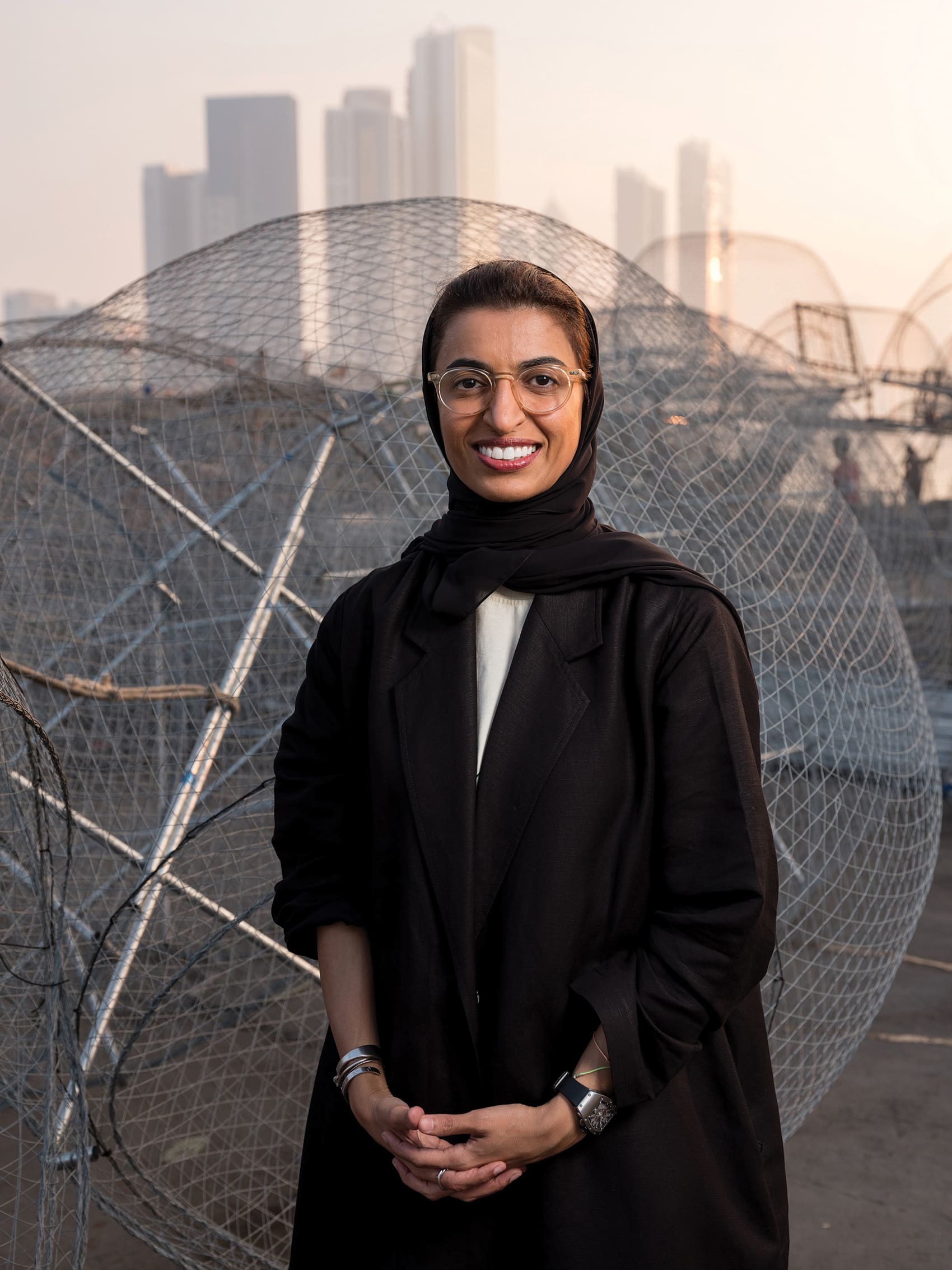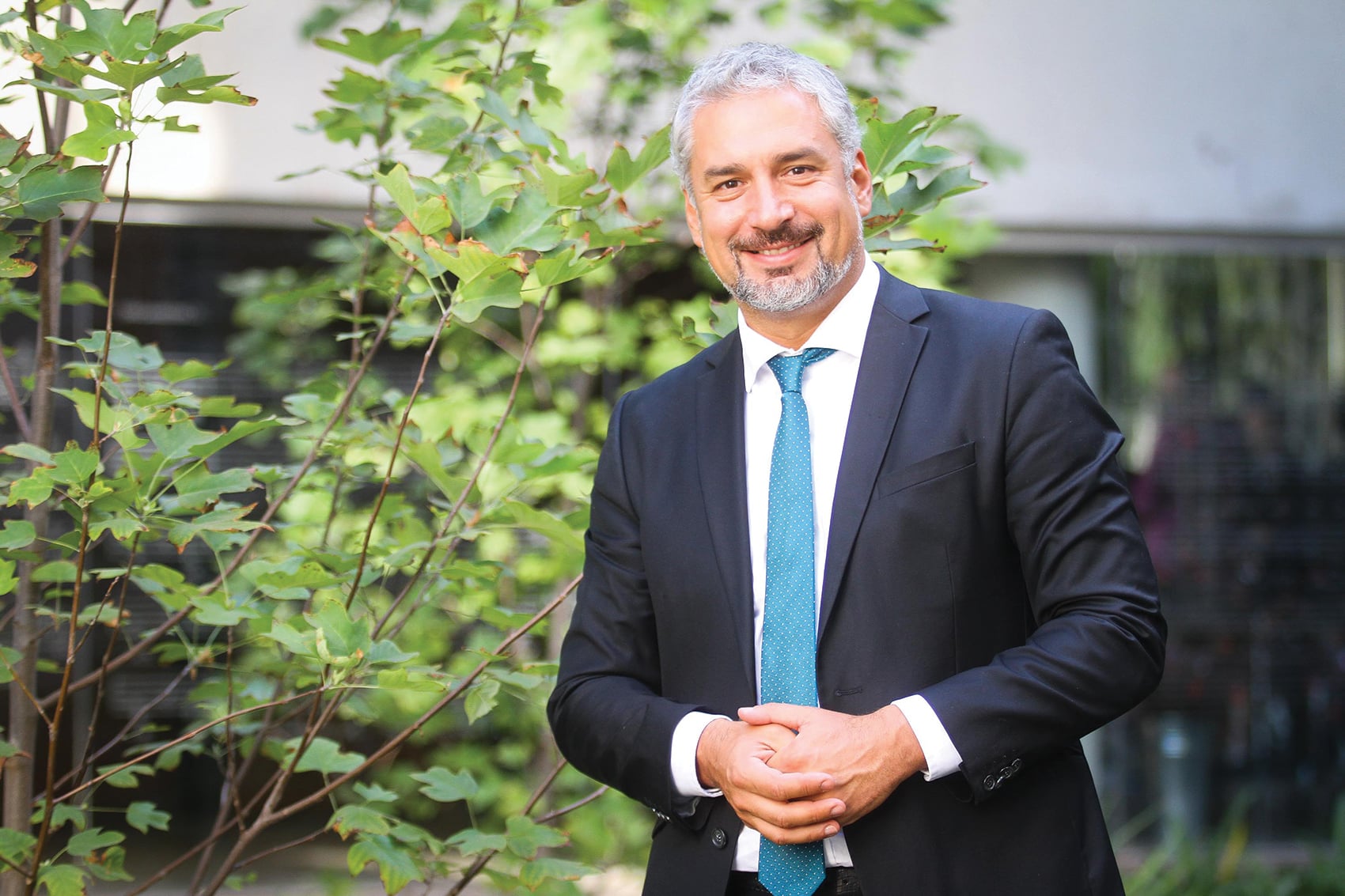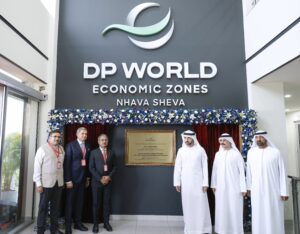WORDS ABY SAM THOMAS AL-NOURI COMPLEX
IMAGES © UNESCO / MOAMIN AL-OBAID
UNESCO launches an international competition to rebuild a global icon in Iraq—architects and designers invited to reimagine Mosul’s historic Al-Nouri Complex
It was once described by 10th century Arab geographer Al-Muqaddasi as “the metropolis of this region,” but that is almost certainly not the impression one may have of the city of Mosul in Iraq today. Given the troubles and turmoil it has faced over the last couple of years, Mosul’s history and heritage seem to have been relegated to the background on account of the damage and destruction the city has undergone, but that looks set to change now thanks to a new project being spearheaded by the United Nations Educational, Scientific, and Cultural Organization (UNESCO), in collaboration with the governments of Iraq and the United Arab Emirates.
To understand the relevance of this particular initiative, a look at Mosul’s past is necessary. While history records the establishment of Mosul’s Old City to have happened in the seventh century B.C., the city rose in prominence around the 12th century A.D., when it was under the rule of the Zangid dynasty. Founded by Imad Ad-Din Zangi, the Zangi dynasty ruled over Mosul for 130 years, which has since been referred to as “the golden years” of the city. One of the highlights of this period was the construction of the grand mosque of Mosul, the Al-Nouri Mosque, situated at the geographical heart of Mosul, with one of its many claims to fame included its leaning minaret, which led to it becoming known as the Al-Hadba (Arabic for “hunchback”) Minaret.
The area of the mosque, which, in following years, included a prayer hall, a madrasa, and other buildings, has since been referred to as Al-Nouri Complex, and it became a hallmark of the Old City, which also included the churches of Al-Sa’a and Al-Tahira, both of which were iconic structures in their own right. With itbeing a place where people of diverse cultures and faiths peacefully coexisted with each other, it’s easy to see why this city-whose name translates to “the linking point” in Arabic-came to be a definite source of pride forand representative of the diversity of the Moslawi people, a population that includes Arabs, Kurds, Tukens, Armenians, Assyrians, Yazidis, Shabahkis, Mandeans, Kawliyans, Circassians, and several other ethnic groups.It is this symbol of the historic city of Mosul that was severely damaged in the summer of 2017, when the terrorist forces of the Islamic State of Iraq and the Levant (ISIL, or Da’esh), which had occupied the city in2014, was defeated and forced to leave by a coalition led by the Iraq government and its international allies.
 Amid their retreat from Mosul, ISIL left a series of explosives in the Al-Nouri Complex, which, besides destroying the mosque and its minaret, left the location mostly covered in rubble and thus inaccessible as well. With the monument being emblematic of Mosul, ISIL’s destruction of the Complex was described by the then Prime Minister of Iraq Haider Al-Abadi as the militant group’s “declaration of defeat,” but it’s safe to say that its loss also weighed heavily on the minds of the country’s people. Indeed, this is the impression I got when I talked with Dr. Hassan Nadhem, the current Minister of Culture of Iraq, on the relevance of this landmark to not just his country, but to the entire Middle East region as well. “Its importance stems from the fact that it represents two images,” Dr. Nadhem said. “The first one shows the depth and the multitude of the Iraqi legacy, especially given that this area includes the churches of Al-Sa’a and Al-Tahira in the Old City, in addition to the many traditional buildings near the Mosque. The second image represents a painful picture of the modern age, embodied by ISIL in the most horrific way, as they tried to murder the identity and history of Iraq.”
Amid their retreat from Mosul, ISIL left a series of explosives in the Al-Nouri Complex, which, besides destroying the mosque and its minaret, left the location mostly covered in rubble and thus inaccessible as well. With the monument being emblematic of Mosul, ISIL’s destruction of the Complex was described by the then Prime Minister of Iraq Haider Al-Abadi as the militant group’s “declaration of defeat,” but it’s safe to say that its loss also weighed heavily on the minds of the country’s people. Indeed, this is the impression I got when I talked with Dr. Hassan Nadhem, the current Minister of Culture of Iraq, on the relevance of this landmark to not just his country, but to the entire Middle East region as well. “Its importance stems from the fact that it represents two images,” Dr. Nadhem said. “The first one shows the depth and the multitude of the Iraqi legacy, especially given that this area includes the churches of Al-Sa’a and Al-Tahira in the Old City, in addition to the many traditional buildings near the Mosque. The second image represents a painful picture of the modern age, embodied by ISIL in the most horrific way, as they tried to murder the identity and history of Iraq.”

Dr. Nadhem’s response is essentially an explainer of why UNESCO launched the “Revive the Spirit of Mosul” initiative in 2018. This project, whose goal was declared to be “to foster reconciliation and social cohesion in Mosul and its Old City,” aimed to both restore and reconstruct its iconic landmarks, which includes the Al-Nouri Mosque and its Al-Hadhba minaret, as well as the churches of Al-Sa’a and Al Tahira.

While UNESCO led this project in collaboration with the Government of Iraq, “Revive the Spirit of Mosul” also had the backing of the Government of the United Arab Emirates (UAE) as well, with it pledging more than US$50 million to this endeavor. In order to understand the UAE’s interest in and support for this initiative, I spoke with H.E. Noura Al Kaabi, UAE Minister of Culture and Youth, who pointed out to me that this particular project’s importance is tied not just to Iraq, but the Middle East and the world as a whole as well. “Iraq’s culture and history have played a key role in our collective history, and the destruction of the Al Nouri Mosque is an attack on our shared cultural heritage,” she explained. “To see the project completed, and Al-Nouri Complex used as a vibrant community space for worship, education, and connection will serve as a strong example of hope, resilience, and coexistence for Iraq, the region, and the world.”
Al Kaabi also noted how rebuilding Mosul in the model of the culturally diverse ideals that’s embedded in its history sends out a clear message in terms of the positive principles that the Middle East stands for, as opposed to the negative hues it is often painted with in the larger global landscape. “The city of Mosul has, for thousands of years, been a commercial and cultural link between the north, south, east and west,” Al Kaabi explained. “One of the world’s most ancient cities, its origins date back to seventh or sixth century BC. As such, the legacy of the city is primarily defined in terms of its centuries of pluralism and cultural coexistence. The Al Nouri Mosque has been a significant landmark for the Old City of Mosul, and a symbol of its cultural identity, since the 12th century A.D. Therefore, its importance has to be seen, both in terms of the city’s architectural history and cultural history. Although it underwent many renovations over the years, it was destroyed only when Da’esh captured the city. Rebuilding it and restoring it to its original glory is an act of resistance to terrorism. It is particularly relevant in the context of the Middle East, as it sends out a clear message that the mayhem spread in the region by extremists and terrorists will not only be defeated militarily, but the destruction they cause will be undone, and the divisive ideas they propagate will be countered.

This idea of getting people to come together for the greater good of not just Iraq, but the world as a whole, seems to be a definite undercurrent with UNESCO’s latest undertaking as part of the “Revive the Spirit of Mosul” initiative. UNESCO has just launched a global competition (see more details on https://unes.co/mosulcompetition) that is inviting architects, engineers, companies, or joint ventures from all around the world to come up with a design for the new Al-Nouri Complex. According to Ernesto Ottone R., the Assistant Director General for Culture at UNESCO, the contest, which will be accepting submissions until spring of next year, seeks to rehabilitate the Complex in a manner that’s reflective of Mosul’s storied heritage, while making use of new and modern techniques to weave it into the city’s current fabric. “One of UNESCO’s missions is to protect culture in emergency situations, and build on its power to promote peace-building, recovery, and reconciliation,” Ottone said. “Such action is fundamental to achieving sustainable development and fostering security. It was therefore natural for our organization to be at the bedside of the Moslawi, and support them in their efforts to rebuild this Al Nouri Complex, without which they could not recover totally from the trauma of the destruction. It should also be added that one of our guiding principles is to facilitate a consultative approach to ensure that all steps taken towards the rebuilding is in line with the expectations of the local communities and authorities. This is why the decision to organize an international architectural competition was taken and agreed upon in April 2020 by the project’s steering committee in which local authorities, community representatives, and religious leaders are represented.”
Ottone went on to explain the factors that will govern how UNESCO and its partners will determine the winners of this contest. “The competition will be guided by a set of clear values that UNESCO and our Iraqi counterparts would like to see reflected in the design,” he said. “Situated at the heart of the old city, Al-Nouri Complex is surrounded by beautiful 18 and 19th century late Ottoman buildings. Thus, we hope that architects and designers will see the opportunity to offer an integrated design inspired by such a unique and rich architecture of Mosul’s Old City. Moreover, and most importantly, the project should harmoniously fuse the old –the remains of the complex’s own historical buildings- with its newly designed ones, and all together with the landscaping design. We also hope that the architectural proposals will provide a space for the community, which is a place of sharing knowledge, and hosting cultural and religious manifestations. We would like to see designs that that respect the heritage environment, and convey a sense of peace and tranquility for worshipers. Of course, we also advocate for an environmentally friendly design that prioritize local constructive cultures and local artisans’ know-how.”
 This sentiment is echoed in Nadhem’s vision for what he believes the people of Iraq would want the Al-Nouri Complex to signify with respect to its redesign. “Iraq’s interest in reconstructing Al-Nouri Complex has two reasons,” he said. “The first reason is related to Iraq’s interest in preserving its legacy, which can be considered to be both a national and an international one. The second reason is related to Iraq’s war against terrorism that has caused the death of many brave Iraqi people. This war was not only to maintain the safety and security of the country, but it was also a triumph of peace, culture, and coexistence of society and life with all its meanings. Al-Nouri Complex, after reconstruction, will be a cultural, humanistic memorial of the war that Iraq waged for the sake of humanity. In addition, this Complex is for the citizens of the city who are conscious about the legacy and the inveterate history of their city.” The UAE’s Al Kaabi agreed with this statement from her Iraqi counterpart, saying, “The Al-Nouri Mosque was used by Da’esh to announce their ‘caliphate’ in 2014, and destroyed by them three years later before they were pushed out of Mosul. These actions cast a shadow on a mosque that for 800 years had stood as a symbol of coexistence and inclusion, in a city where the sound of church bells and the call to prayer were often heard at the same time. It is especially important during these times when we see all around us divisive narrative intent on pitting groups of people against each other, to counter this narrative with a stronger, louder message of resilience, hope, and peace.”
This sentiment is echoed in Nadhem’s vision for what he believes the people of Iraq would want the Al-Nouri Complex to signify with respect to its redesign. “Iraq’s interest in reconstructing Al-Nouri Complex has two reasons,” he said. “The first reason is related to Iraq’s interest in preserving its legacy, which can be considered to be both a national and an international one. The second reason is related to Iraq’s war against terrorism that has caused the death of many brave Iraqi people. This war was not only to maintain the safety and security of the country, but it was also a triumph of peace, culture, and coexistence of society and life with all its meanings. Al-Nouri Complex, after reconstruction, will be a cultural, humanistic memorial of the war that Iraq waged for the sake of humanity. In addition, this Complex is for the citizens of the city who are conscious about the legacy and the inveterate history of their city.” The UAE’s Al Kaabi agreed with this statement from her Iraqi counterpart, saying, “The Al-Nouri Mosque was used by Da’esh to announce their ‘caliphate’ in 2014, and destroyed by them three years later before they were pushed out of Mosul. These actions cast a shadow on a mosque that for 800 years had stood as a symbol of coexistence and inclusion, in a city where the sound of church bells and the call to prayer were often heard at the same time. It is especially important during these times when we see all around us divisive narrative intent on pitting groups of people against each other, to counter this narrative with a stronger, louder message of resilience, hope, and peace.”
An independent, international jury will determine the winners of this competition, with Ottone saying that it will be composed of experts in the key domains relating to this initiative, and selected by UNESCO and the Government of Iraq. According to him, the jury will look at “the extent to which the proposal accomplished an almost seamless integration with the rich architecture of Mosul’s Old City, the capacity to which it achieved the integration of its own remaining and reconstructed buildings with its newly designed ones as well as the landscaping of the entire complex, the potential of the design to create an oasis of peace and tranquility for worshipers and a vibrant vital center for the community, and the capacity of the project to envision an environmentally conscious design.” Meanwhile, Al Kaabi noted how an international competition of this nature would allow for innovative and creative ideas from all corners of the globe to participate in the rebuilding of the Al-Nouri Complex, while also increasing global awareness on the themes of cultural preservation and restoration, the impact of terrorism on our culture, and the importance of international cooperation in the cultural sphere.
“As for the values and ideas we hope the participants to bear in mind, it is imperative to focus on retaining all the traditional elements of the original structure, including use of the remains of the historic landmark,” Al Kaabi added. “The participants should consider using traditional materials and modern techniques, to allow for harmonious integration between the Old City’s architecture and the new design. The new buildings will make use of colors and materials in accordance with those used in the Old City of Mosul. In short, we expect traditional architectural typologies with subtle modern re-interpretations. There are other functional aspects we invite the participants to pay attention to, such as accessibility for people with disabilities.” From Nadhem’s standpoint, he reiterated the importance of the Al-Nouri Complex to the people of Iraq, and how its design and development needs to be done keeping that aspect firmly in mind. “In the many meetings we had with UNESCO, we have set the plan for the reconstruction of the Al-Nouri Complex,” he said. “We have confirmed two important basic points, which relate to preserving the inherent traditional countenance and the architectural, cultural identity of the structure, and setting a clear time frame for plan for the reconstruction plan.”
 With the UNESCO competition now getting underway and open for entries, one waits with bated breath for what hopes will be a slew of innovative, inspiring ideas that bring back to life one of Mosul’s most loved landmarks. And it’s not just about Iraq- as Al Kaabi points out, the UAE’s involvement in this UNESCO project is testament to the significance this initiative has for the wider Middle East, and, of course, the world in its entirety. “The UAE pledged to join the initiative not only because of UNESCO’s international credibility in the cultural field, but because the proposal was about more than rebuilding cultural sites,” Al-Kaabi said. “It put Moslawis at the center, and aimed at reviving the identity, spirit, heart, and soul of the community… The project fully aligns with our vision for a moderate, harmonious social fabric for our region, and is reflective of not only our fraternal ties with Iraq, but also of our cooperation with international organizations, and the importance we place on preserving humanity’s shared heritage.”
With the UNESCO competition now getting underway and open for entries, one waits with bated breath for what hopes will be a slew of innovative, inspiring ideas that bring back to life one of Mosul’s most loved landmarks. And it’s not just about Iraq- as Al Kaabi points out, the UAE’s involvement in this UNESCO project is testament to the significance this initiative has for the wider Middle East, and, of course, the world in its entirety. “The UAE pledged to join the initiative not only because of UNESCO’s international credibility in the cultural field, but because the proposal was about more than rebuilding cultural sites,” Al-Kaabi said. “It put Moslawis at the center, and aimed at reviving the identity, spirit, heart, and soul of the community… The project fully aligns with our vision for a moderate, harmonious social fabric for our region, and is reflective of not only our fraternal ties with Iraq, but also of our cooperation with international organizations, and the importance we place on preserving humanity’s shared heritage.”
Aby Sam Thomas is the Editor in Chief of Entrepreneur Middle East. He’s been working in journalism since 2011, prior to which he was an analyst programmer with Accenture, where he worked with J. P. Morgan Chase’s investment banking arm at offices in Mumbai, London, and New York. He holds a Master’s Degree in Journalism from the Columbia University Graduate School of Journalism in New York.













